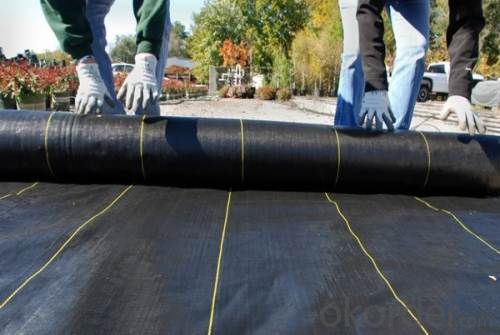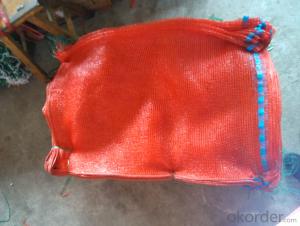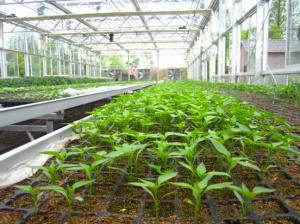PP/PE Woven Fabric for Weed Control and Ground Cover
- Loading Port:
- Shanghai
- Payment Terms:
- TT OR LC
- Min Order Qty:
- 2000 m²
- Supply Capability:
- 100000 m²/month
OKorder Service Pledge
OKorder Financial Service
You Might Also Like
PP/PE Woven Fabric for Weed Control and Ground Cover
Weed Control fabric not only prevents weeds, it encourage root growing by keep soil moist and cool. Made of UVtreated polypropylene,
this costeffective weed control fabric feteures allow the free flow of air,water and nutrients to the soil while blocking sunlight and weeds.
This chemical free method for stopping weed grow for years.
Weed Control Fabric helps minimize your yard work since it stops weeds from growing. You do not have to use herbicides, which can damage your lawn andcause harm tochildrenand animals.Made of
Polypropylenematerial , weed block is easily cut to fit inyour garden or hard landscape areas.
Specification:
Material | Woven PP/PE Fabric |
Width | 0.5m - 4.4m |
Length | 50m - 2500m |
Color | Black/Grass Green/Japser/Black-Green |
Weave | 9*9 to 13*13 |
Weight | 60gsm-180gsm |
U.V. | With or Without U.V. |
Life Span | 3~5 years with U.V. treated |
Feature | Non-Toxic |
Style | Plain |



FAQ:
1. Where is your factory located in?
Factory is located in Jiangsu Province, Neat to Shanghai Port.
2. How long have you been in this product production?
We have been in the business more than 10 years,
3. Can we have some sample or trial order before bunk order?
Yes, we can provide you some free samples, and for trial order, we will offer you the lowest price.
- Q: or when did people find plastic surgery out of the norm?
- plastic surgery was first tested in WW1 to soldiers who had severe facial wounds, towards the end of ww2 more people were being killed due to infection than were being saved. however it was not until the 21st century that cosmetic surgery has become a normal thing
- Q: Can nursery trays be used for seedling trays?
- Yes, nursery trays can be used for seedling trays. Nursery trays are designed to hold and support young plants, just like seedling trays. They provide the necessary space for seedlings to grow and develop before they are transplanted into larger pots or directly into the ground.
- Q: What are the advantages of using agricultural plastic products?
- There are several advantages of using agricultural plastic products. Firstly, they provide a cost-effective solution for farmers, as they are generally cheaper than traditional materials such as wood or metal. Secondly, agricultural plastic products are lightweight and easy to transport, making them convenient for farmers to handle and install. Additionally, these products are durable, weather-resistant, and have a long lifespan, reducing the need for frequent replacements. Moreover, agricultural plastic products can help improve crop yields by providing insulation and protection against pests, weeds, and extreme weather conditions. Lastly, they are also environmentally friendly, as they can be recycled and reused, reducing waste and promoting sustainable farming practices.
- Q: What are some ground cover options for rocky soil?
- Some ground cover options for rocky soil include creeping thyme, sedum, creeping phlox, ice plant, and moss.
- Q: This question asks if the plastic materials used in agriculture can be recycled and used again.
- <p>Yes, agricultural plastic can be recycled and reused. Many types of agricultural plastics, such as polyethylene and polypropylene, are recyclable. Recycling these materials helps reduce waste and the environmental impact of plastic production. After collection, the plastics are cleaned, sorted, and processed into new pellets or flakes, which can then be used to manufacture new agricultural products or other plastic items. However, the recycling process and market for agricultural plastics can vary by region and the type of plastic, so not all agricultural plastics may be recycled in every location.</p>
- Q: Are agricultural plastic products UV resistant?
- Yes, agricultural plastic products are typically UV resistant. UV resistance is a common requirement for agricultural plastics as they are exposed to sunlight for extended periods. Manufacturers often incorporate additives into the plastic material to enhance its UV resistance, ensuring durability and longevity in outdoor agricultural environments.
- Q: Okay, I am trying to clean the dam under the falls in our park somewhat. Have found that large masses of plastic bags get caught around the stones occasionally trapping and killing smaller members of our wildlife… most of these bags are just eroded by river mud and bacteria with duckweed and algae clinging stubbornly. Do such impurities get melted out of the bags during the normal recycling process or are they degraded too far to be renewed? Does anyone have a source to use as guide for plastic bag recycling or even know where to find a video showing how plastic bags are recycled by the plants that recycle bags?
- Plastic recycling is the process of recovering scrap or waste plastic and reprocessing the material into useful products, sometimes completely different in form from their original state. For instance, this could mean melting down soft drink bottles and then casting them as plastic chairs and tables. Plastic 'recycling' is largely a misnomer since plastic beverage bottles soda, juice, milk are never reformed into new beverage bottles; this requires virgin plastic. There simply is no cycle involved with the recycling of plastic beverage containers.
- Q: Is it possible for farmers to incorporate recycled agricultural plastics into their farming practices?
- <p>Yes, farmers can use recycled agricultural plastic in their production processes. Recycled plastics can be repurposed into various forms such as mulch films, which help in weed control and moisture retention, or as components in greenhouses. This not only reduces waste but also conserves resources. However, the quality of recycled plastic might vary, and its use should be guided by safety standards to ensure it does not contaminate the soil or crops.</p>
- Q: Can agricultural plastic products help with weed suppression?
- Yes, agricultural plastic products can help with weed suppression. They can be used as mulch or ground cover to block sunlight, preventing weed growth. Additionally, plastic products like weed mats or geotextiles can be placed around plants to inhibit weed growth by creating a barrier.
- Q: What are the different types of plastic products used in agriculture?
- There are various types of plastic products used in agriculture, including plastic mulch films, greenhouse covers, irrigation pipes, plant containers, and netting. These products are designed to enhance crop production, protect plants from pests and weather conditions, and improve water management in agricultural settings.
Send your message to us
PP/PE Woven Fabric for Weed Control and Ground Cover
- Loading Port:
- Shanghai
- Payment Terms:
- TT OR LC
- Min Order Qty:
- 2000 m²
- Supply Capability:
- 100000 m²/month
OKorder Service Pledge
OKorder Financial Service
Similar products
Hot products
Hot Searches
Related keywords




























